Support us
Help us to help the Alps and all its magnificent biodiversity by making a donation today.

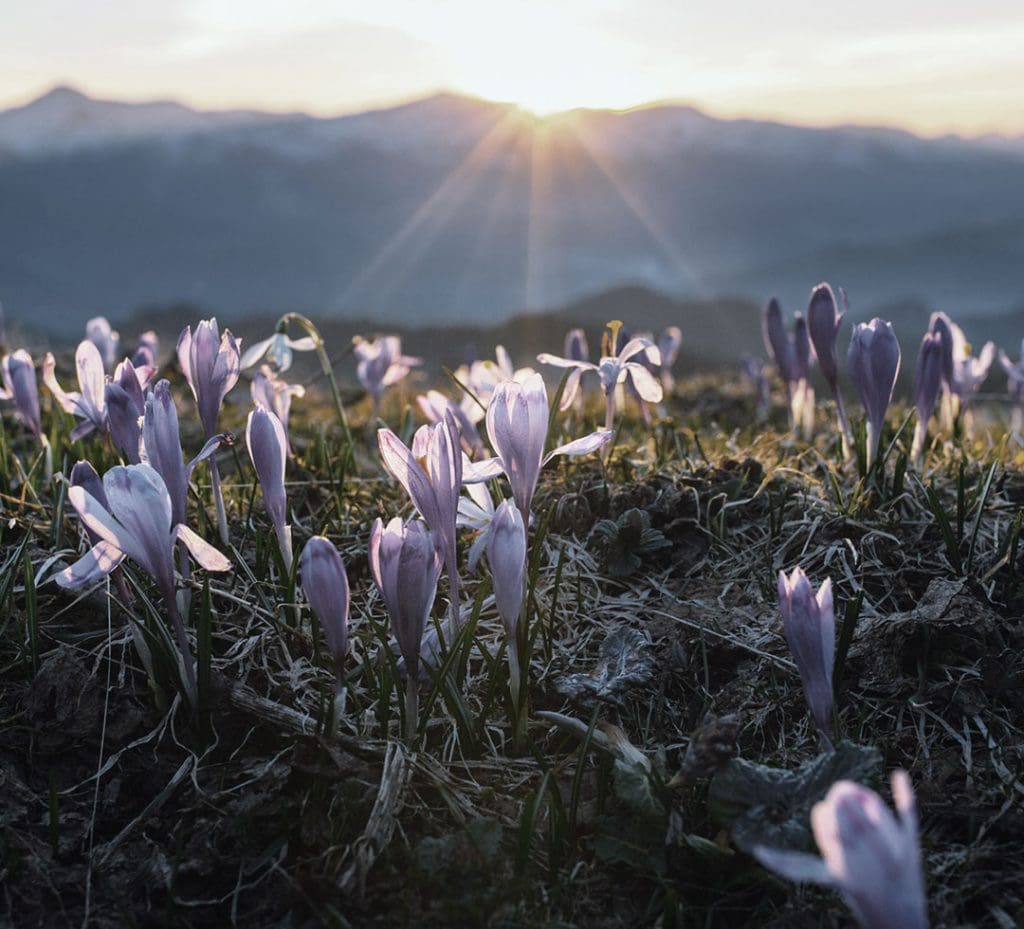
The uniqueness of Alpine flora stems from the variety of habitats in the Alps and the “harsh” environmental conditions that drive species to change and adapt. While the areas above the tree line may look hostile and barren, they contain an incredible collection of microhabitats where biodiversity flourishes. Plants above the forest line, for example, have evolved different growth forms that allow them to survive harsh winds and cold winters. Six hundred species of flowering plants are found exclusively in the Alps or have their primary range there. Of about 4,500 vascular plant species in the Alps, nearly 8% are endemic, occurring in the Alps and nowhere else in the world.
Differences in elevation and climate in the Alps result in diverse vegetation. While these zones generally have remained intact, global warming has caused an upward migration of plants since the early 1900s and Austrian researchers have estimated that the upper limits of Alpine plant species rose approximately three feet during each decade of the 20th century.
residents in the Alps
annual visitors
decrease in glacier volume
since 1850
residents in the Alps
annual visitors
decrease in glacier volume since 1850
Different plants species
Species of flowering plants
Are endemic plant species
Mediterranean vegetation dominates in the southern parts of the Maritime Alps and the southern Italian Alps, with maritime pine, palm, sparse woodland, and agave and prickly pear all in evidence.
There exists a distance of about 900 metres above the tree line and below the permanent snow line which has been eroded by glaciation and is covered with lush Alpine meadows in places where in sheep and cows grazeduring the summer. These distinctive mountain pastures are called alpages, but the spread of invasive weeds, pollution from animal wastes, and erosion from ski-related development today limits their carrying capacity.
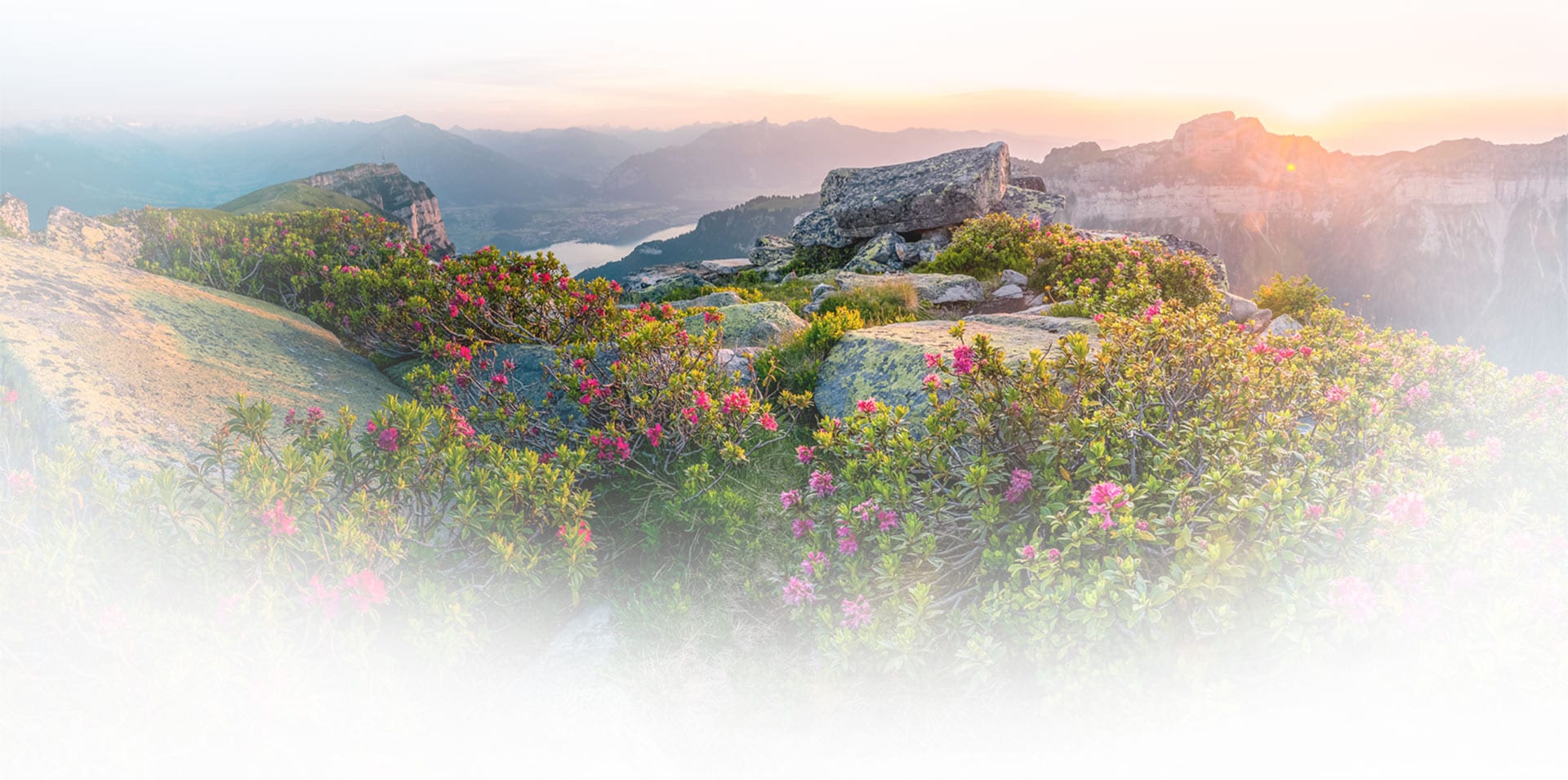
As glaciers melt, they leave behind unstable, stony ground, with zero nutrients. Yet specially adapted plants manage to colonise this apparently inhospitable terrain. Mosses move in first, producing a thin layer of humus when they die, which gives the saxifrages and toadflaxes a chance to take root. The greatest problem for these pioneers is not so much the lack of nutrients as the constantly moving ground.
To protect themselves, even the tiniest plants anchor themselves with roots that can grow up to a metre deep. Thanks to this underground network, the plant is able to sprout new shoots if it finds itself engulfed by rolling stones. Some plants are small and grow in the form of flat cushions, rosettes, or carpets to protect themselves from wind and to resist the pressure of heavy snow layers. The dwarf willow, one of the world’s smallest trees, keeps its trunk below the surface, leaving just a few small branches poking out. Not only does this strange way of growing keep it warm, but also shelters it from the wind.
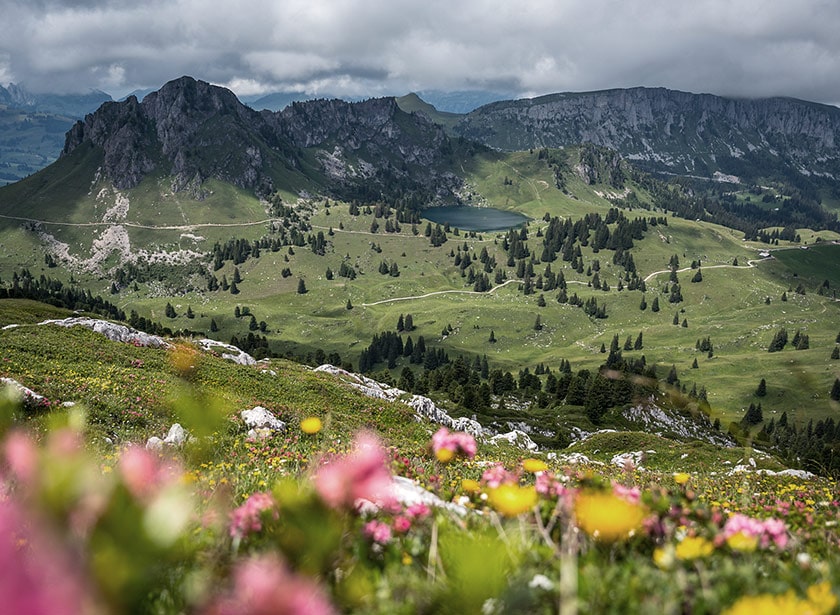
Plants that share their habitat with grazing animals run the risk of being eaten before they have had time to reproduce so evolution has equipped some species with powerful defensive weapons. Some have tough, prickly leaves, which alpine ruminants tend not to like too much and therefore increase the life span of the plant and boost its chances of being able to reproduce. Another life-limiting problem faced by alpine plants are heavy hooves. To avoid being trampled, some delicate plants like orchids only grow close to rocks or cliffs. Other tender plants have strong root systems which help them withstand an assault by ravenous beasts.
The bright colours of alpine meadow flowers are vital to their survival and reproduction. Firstly, the pigments they contain protect them from the intense ultraviolet rays found at high altitude. Secondly, their bright colours attract swarms of honey and bumble bees during spring. Without the help of these pollinators, the flowers would not be able to reproduce.
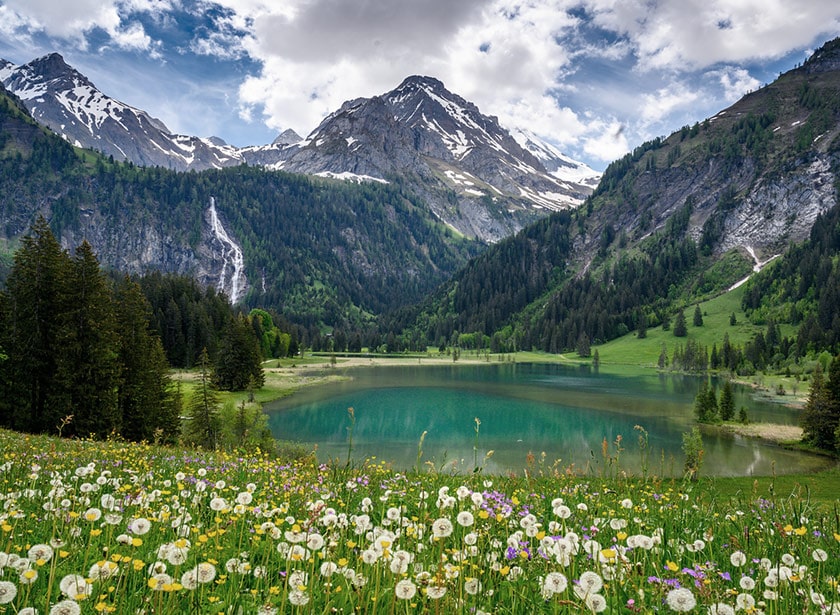
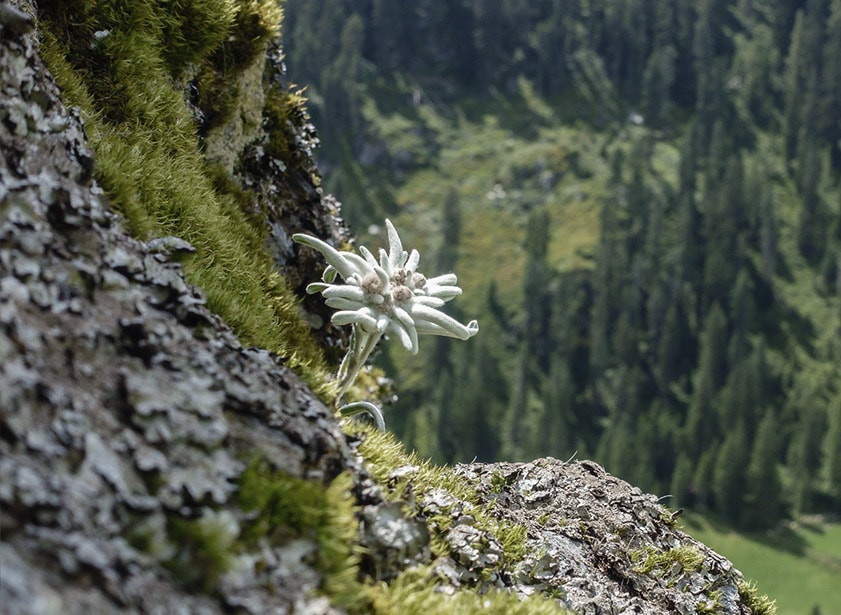
Scientists believe that the edelweiss flower migrated from Asia to the Alps during the Ice Age. Today, it can be found in many Alpine countries at high altitudes (2,000 to 3,000 metres), blooming from July to September on exposed limestone rocks as well as at the edge of meadows. Every part of the flower is designed to withstand extreme weather, from the wind-resistant underground stems to its hairy bracts which prevent evapotranspiration and block UV rays. Today, the edelweiss not only represents a connection to the nature and beauty of Switzerland but is a hallmark of Swiss quality
Plants growing on rock faces have developed various strategies to deal with water shortage. Some are covered in hairs, which deflect the sun’s rays and also form a protective layer that locks in moisture. Others have a waxy coating, which serves the same purpose. Succulents store water in their thick leaves and many of them form rosettes so that the leaves shade each other. Another set of plants increase their chances of withstanding drought by growing no more than a few centimetres tall. Their lack of height also protects from the dry winds. And while edelweiss may be the most famous Alpine flower, the purple saxifrage, which has been spotted at altitudes as high as 4,500m, is the hardiest.
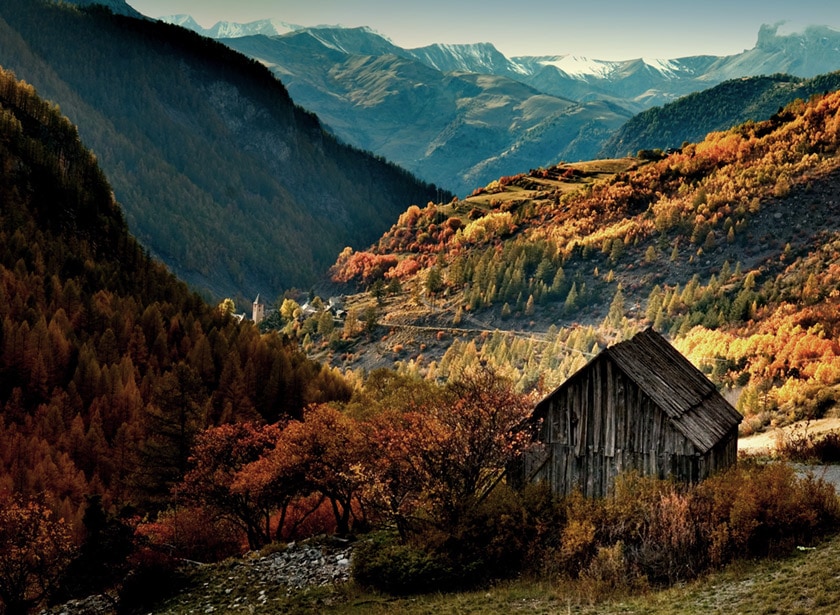
Help us to help the Alps and all its magnificent biodiversity by making a donation today.
Help us to help the Alps and all its magnificent biodiversity by making a donation today.
| Cookie | Duration | Description |
|---|---|---|
| cookielawinfo-checkbox-advertisement | session | Set by the GDPR Cookie Consent plugin, this cookie is used to record the user consent for the cookies in the "Advertisement" category . |
| cookielawinfo-checkbox-analytics | 11 months | This cookie is set by GDPR Cookie Consent plugin. The cookie is used to store the user consent for the cookies in the category "Analytics". |
| cookielawinfo-checkbox-functional | 11 months | The cookie is set by GDPR cookie consent to record the user consent for the cookies in the category "Functional". |
| cookielawinfo-checkbox-necessary | 11 months | This cookie is set by GDPR Cookie Consent plugin. The cookies is used to store the user consent for the cookies in the category "Necessary". |
| cookielawinfo-checkbox-others | 11 months | This cookie is set by GDPR Cookie Consent plugin. The cookie is used to store the user consent for the cookies in the category "Other. |
| cookielawinfo-checkbox-performance | 11 months | This cookie is set by GDPR Cookie Consent plugin. The cookie is used to store the user consent for the cookies in the category "Performance". |
| elementor | never | This cookie is used by the website's WordPress theme. It allows the website owner to implement or change the website's content in real-time. |
| PHPSESSID | session | This cookie is native to PHP applications. The cookie is used to store and identify a users' unique session ID for the purpose of managing user session on the website. The cookie is a session cookies and is deleted when all the browser windows are closed. |
| viewed_cookie_policy | 11 months | The cookie is set by the GDPR Cookie Consent plugin and is used to store whether or not user has consented to the use of cookies. It does not store any personal data. |
| Cookie | Duration | Description |
|---|---|---|
| wp-wpml_current_language | session | This cookie is used by WPML, the language plugin used on this website, to allow pages to be displayed in the language selected by the user. If it is not active, the user will have to change the language manually each time he/she switches pages. |